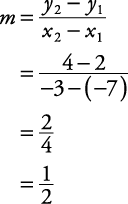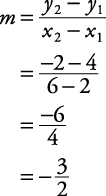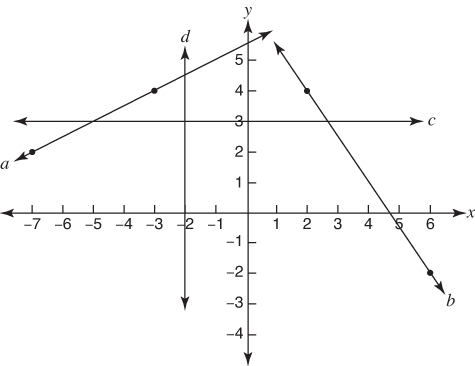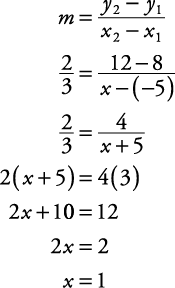Published On:Friday, 9 December 2011
Posted by Muhammad Atif Saeed
Slope of a Line
Slope of a Line
The slope of a line is a measurement of the steepness and direction of a nonvertical line. When a line slants from lower left to upper right, the slope is a positive number. Item (a) in Figure 1 shows a line with a positive slope. When a line slants from upper left to lower right, the slope is a negative number (b). The x-axis or any line parallel to the x-axis has a slope of zero; that is, a horizontal line has a slope of zero (c). The y-axis or any line parallel to the y-axis has no defined slope; that is, a vertical line has an undefined slope (d).Figure 1. Slopes of lines.


Example 1
Use Figure 2 to find the slopes of the lines a, b, c, and d.Line a passes through the points (–7,2) and (–3,4).


m = 0
Line d is parallel to the y-axis. Therefore, line d has an undefined slope. Figure 2. Find the slopes.

Example 2
A line passes through (–5,8) with a slope of . If another point on this line has coordinates ( x,12), find x.
. If another point on this line has coordinates ( x,12), find x. 









